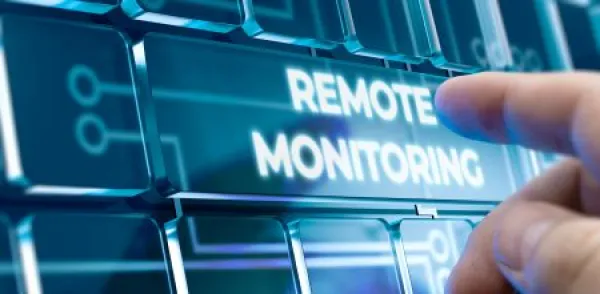Hint: Time is money.
As healthcare technology advances, more digital medicine services — encompassing everything from consultations to intensive patient monitoring — are emerging that offer providers new ways to deliver patient care. In oncology, for example, providers can use remote physiological monitoring (RPM) to “to monitor blood levels or blood pressure” and “manage … care from a distance” according to the American Cancer Society.
If you find it challenging to differentiate between service types and navigate the maze of code choices, you’re not alone. So, here are the dos and don’ts of RPM coding to help you correctly implement the codes.

Become Familiar With the 4 RPM Codes
RPM is a digital medicine service that enables providers to manage patient treatment plans by gathering and analyzing data over the course of time. In Appendix R, CPT® notes “Patient monitoring and/or therapeutic services are divided into three distinct categories: device or software set-up and education, data transfer, and data interpretation.” These categories are reflected in the four codes you will use for reporting RPM:
- 99453 (Remote monitoring of physiologic parameter(s) (eg, weight, blood pressure, pulse oximetry, respiratory flow rate), initial; set-up and patient education on use of equipment) is a practice expense-only code intended to capture clinical staff time spent on education and setup.
- 99454 (Remote monitoring of physiologic parameter(s) (eg, weight, blood pressure, pulse oximetry, respiratory flow rate), initial; device(s) supply with daily recording(s) or programmed alert(s) transmission, each 30 days) is a practice expense-only code intended to describe the device supplied and the data it transfers.
- 99457 (Remote physiologic monitoring treatment management services, clinical staff/physician/other qualified health care professional time in a calendar month requiring interactive communication with the patient/caregiver during the month; first 20 minutes) and +99458 (Remote physiologic monitoring treatment management services, clinical staff/physician/other qualified health care professional time in a calendar month requiring interactive communication with the patient/caregiver during the month; each additional 20 minutes) describe data interpretation and treatment plan management.
Remember These Dos
- Do make note of CPT® requirements for reporting. The service must be ordered by a physician or other qualified healthcare professional. The device used for monitoring must be a medical device as defined by the United States Food and Drug Administration (FDA). Furthermore, reporting treatment management codes 99457 and +99458 requires synchronous interaction with the patient/caregiver.
- Do differentiate between remote physiological and remote therapeutic monitoring services. The RPM codes represent your provider’s capturing, interpretation, and management of physiological parameters involving health-related data like weight, blood pressure, pulse oximetry, and respiratory flow rate. In contrast, the therapeutic monitoring codes represent the capturing and interpretation of data along with treatment management for assessing body systems to evaluate the effectiveness of therapeutic treatments or medication adherence. You should not report physiological and therapeutic monitoring codes simultaneously.
- Do bill based on time for the interpretation of data and treatment plan management. Use code 99457 for the first 20 minutes spent in a calendar month. You can report each additional 20 minutes with +99458, but you cannot report services of less than 20 minutes (or less than an additional 20 minutes) in a calendar month.
- Do report remote physiological monitoring with other services as applicable when guidelines are met. Examples include chronic care management (99437, 99439, 99487, 99489, 99490, 99491), principal care management (99424,+ 99425, 99426, +99427), transitional care management (99495, 99496), and behavioral health integration (99484, 99492, 99493, +99494) services.

Avoid the Don’ts
- Don’t report units in excess of what is permitted during the time periods outlined in the guidelines. You should report 99453 only once per episode of care. According to CPT® guidelines, an episode of care starts when monitoring begins and ends when targeted treatment goals are met. You can only report 99454 once every 30 days, and 99457 and +99458 once every calendar month regardless of the number of modalities used for monitoring.
- Don’t report monitoring services if time thresholds are not met. If monitoring lasts less than 16 days, do not report either 99453 or 99454. You can report 99457 and +99458 for monitoring with a duration of less than 16 days provided that the total time for each unit still amounts to 20 minutes.
- Don’t count time spent on other separately reportable services during the same period. For example, if you report both RPM and principal care management, time for each service reported should be distinct and not overlapping. You should not count time on any day when you report an evaluation and management (E/M) service.
- Don’t count time when you document monitoring services that can be reported with more specific codes. Such services may include, but are not limited to, 93264 (Remote monitoring of a wireless pulmonary artery pressure sensor for up to 30 days, including at least weekly downloads of pulmonary artery pressure recordings, interpretation(s), trend analysis, and report(s) by a physician or other qualified health care professional), 99091 (Collection and interpretation of physiologic data (eg, ECG, blood pressure, glucose monitoring) digitally stored and/or transmitted by the patient and/or caregiver to the physician or other qualified health care professional, qualified by education, training, licensure/regulation (when applicable) requiring a minimum of 30 minutes of time, each 30 days), and self-measured blood pressure monitoring reported with codes 99473 (Self-measured blood pressure using a device validated for clinical accuracy; patient education/training and device calibration) or 99474 (Self-measured blood pressure using a device validated for clinical accuracy; separate self-measurements of two readings one minute apart, twice daily over a 30-day period (minimum of 12 readings), collection of data reported by the patient and/ or caregiver to the physician or other qualified health care professional, with report of average systolic and diastolic pressures and subsequent communication of a treatment plan to the patient).
Understanding these dos and don’ts will help ensure accurate reporting and optimize reimbursement for remote physiological monitoring services. Be sure to check with your specific payers for differences and any additional requirements.
Brittany Sowards, BA, CPC, CPMA, CCC, CCVTC, professional coding auditor/educator at WVU Medicine


